Europe’s artificial intelligence scene is thriving – perhaps more than you’d expect. You know what? For a long time, many assumed all the big AI breakthroughs came straight out of Silicon Valley or Beijing. But look around: from London to Berlin to Bucharest, European companies are pushing the frontiers of AI in their own innovative ways.
The continent’s strong research institutions and emphasis on ethical tech have created fertile ground for AI innovation. In fact, AI investment in Europe jumped by roughly 45% recently, highlighting just how much momentum is building on this side of the globe. With supportive regulations (like the upcoming EU AI Act) encouraging responsible AI development, Europe isn’t just playing catch-up – it’s forging its own path.
So, who are the standout players driving this European AI wave? Let’s meet the biggest AI brands in Europe – a mix of research pioneers, industrial titans, and scrappy startups – and see how they’re each shaping the future of AI. (Spoiler: they’re doing some amazing stuff.)
1. DeepMind (United Kingdom) – From Games to Healthcare Marvel
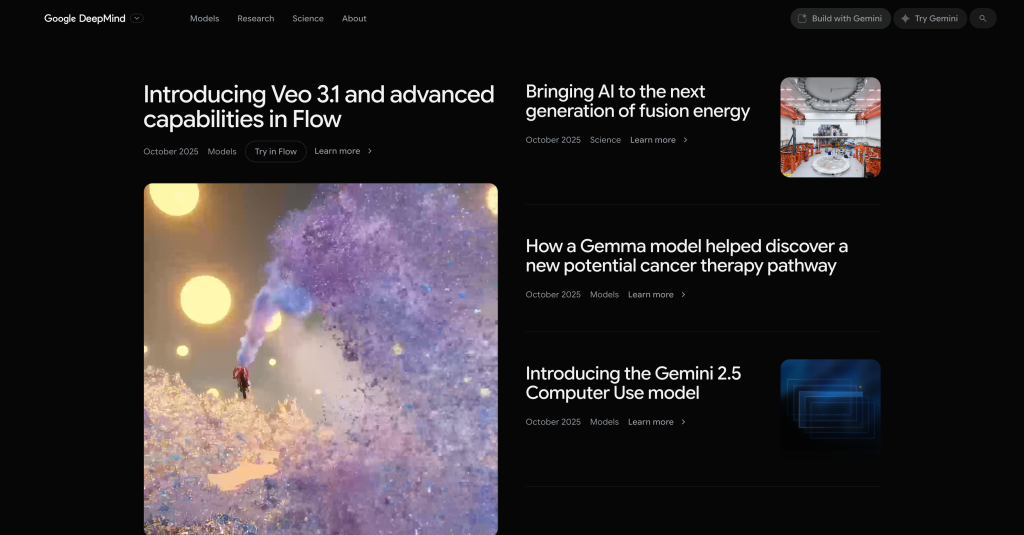
It’s only fitting to start with DeepMind. No list of European AI trailblazers would be complete without this London-based lab. DeepMind achieved fame when its AlphaGo program beat a world champion at Go – a feat that made headlines and announced Europe’s AI prowess to the world. That was just the beginning. Acquired by Google in 2014, DeepMind has since tackled one grand challenge after another. They’ve cracked the problem of protein folding with AlphaFold, revolutionizing biomedical research and drug discovery.
And they’re not stopping at games and science puzzles. DeepMind is also pioneering AI in healthcare, creating algorithms that can help detect diseases and predict patient outcomes earlier than ever. Imagine an AI that flags signs of eye disease from a scan before a doctor would catch it – that’s the kind of real-world impact we’re talking about. DeepMind’s mix of academic brilliance and practical impact makes it something of a legend in European AI circles.
But DeepMind’s influence isn’t just in its own projects; it’s also a talent factory. Many European AI startups can trace their roots to ex-DeepMinders, and its presence has turned London into a global AI research hub. If you ask me, DeepMind set the stage for Europe to be taken seriously in the AI race, proving that world-class AI innovation isn’t limited to California. And best of all, they’ve maintained a collaborative spirit – publishing research openly and often working with universities.
2. SAP (Germany) – Bringing AI to the Boardroom
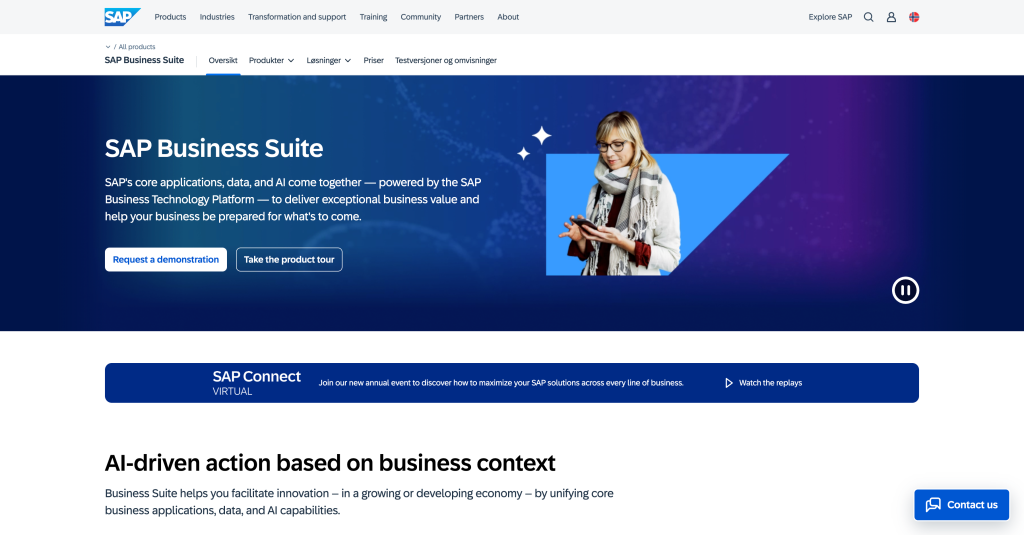
When you think of enterprise software, you might not immediately think “artificial intelligence.” But SAP, Europe’s largest software company, is determined to change that.
SAP is a German giant that has long powered the finance, logistics, and HR systems of businesses worldwide. These days, it’s infusing AI into those systems to make them smarter and more intuitive. How exactly? Well, imagine your business software not just storing data, but actually analyzing it to give you insights – like automatically detecting anomalies in financial transactions or predicting maintenance needs on a factory line. SAP’s AI initiatives aim to do just that: they embed intelligent recommendations and predictions into everyday business processes. In practice, that means an ERP system that can learn from historical data and suggest ways to optimize your supply chain, or an HR system that can flag patterns in employee turnover before they become a bigger issue.
What makes SAP stand out is its sheer scale. By leveraging AI across its vast user base, it’s effectively bringing AI to thousands of companies that use its software. A retailer in Spain or a manufacturer in Sweden might not develop AI algorithms in-house, but if they use SAP, they get AI-driven features out-of-the-box. SAP has been particularly focused on “responsible AI” too – ensuring their AI enhancements respect data privacy and fairness (a big deal in Europe’s regulatory climate).
As a result, SAP helps companies optimise operations with AI while keeping trust and transparency in the mix. For a company that started in the 1970s (way before anyone was talking about machine learning), this ability to continuously innovate has kept SAP at the forefront. They’ve proven that you can teach an old dog new tricks – and in this case, those tricks are powered by neural networks and big data. If you work in a big company in Europe, chances are AI is quietly working behind the scenes in your software, thanks to folks at SAP.
3. DeepL (Germany) – Europe’s Translator-in-Chief
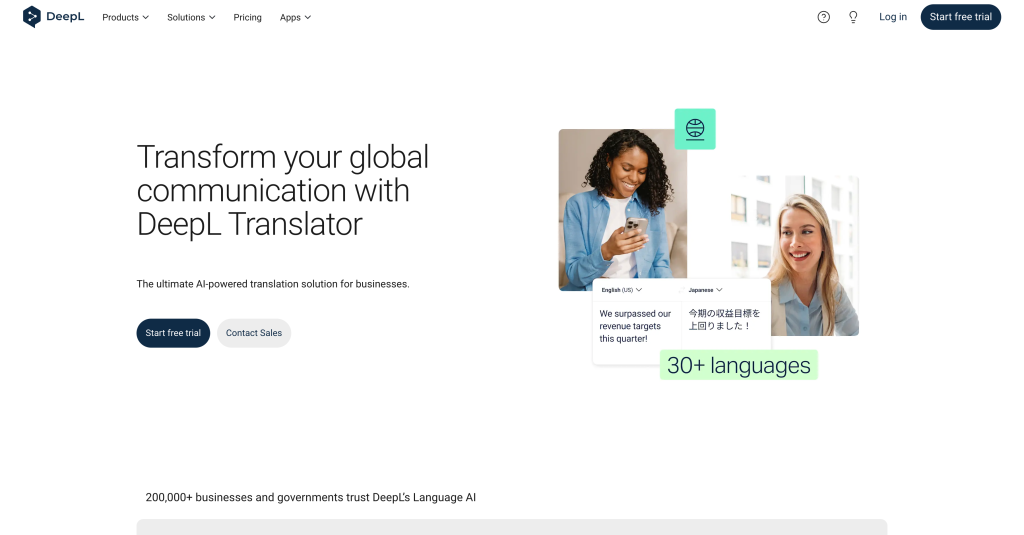
Ever typed a sentence into an online translator and been pleasantly surprised that it actually sounded natural? If so, you might have been using DeepL. This Cologne-based company might not have the same public fame as some Silicon Valley brands, but among AI enthusiasts (and polyglots) it’s a bit of a secret hero.

DeepL uses advanced neural networks to translate text between languages with a level of nuance and fluency that often outshines the big-name translators out there. We’re talking about capturing context and idioms so the result doesn’t read like robotic Babelfish output. For example, a complex German sentence full of cultural subtleties will come out in elegant, idiomatic English – and vice versa – without losing meaning. That’s incredibly hard for machines to do, yet DeepL has managed to set new standards in machine translation quality.
What’s the magic? DeepL built upon research in deep learning (hence the name) and created its own high-performance translation engine. They’ve also benefited from Europe’s linguistic diversity – after all, when you have to cater to German, French, Spanish, Polish, and a dozen other languages coexisting on one continent, you get pretty good at translation.
The service launched to the public in 2017 and quickly won over translators and casual users alike, simply by often giving better results than the incumbents. It feels like having a really skilled bilingual friend available 24/7 to help you write emails or read foreign news. DeepL has since expanded to offer an API and a pro version, meaning businesses can integrate its AI translations into their products.
And crucially, it’s a European company keeping pace with (and arguably beating) the Googles and Microsofts in this niche. For Europe, that’s a big win – a homegrown AI product that millions around the world rely on daily, all while capturing the subtle cultural contexts that make language so much more than just words.
4. Siemens (Germany) – Industrial Giant with an AI Core
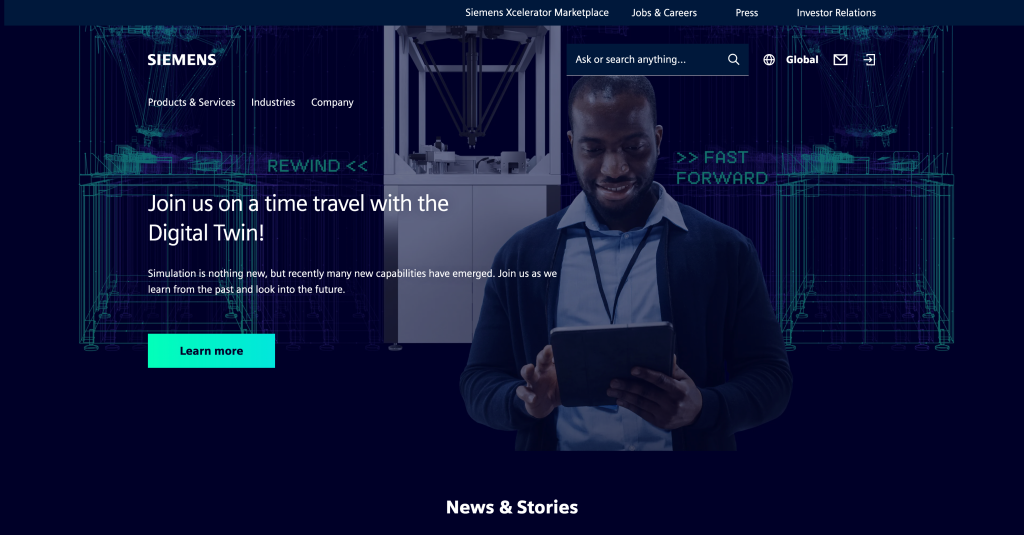
Siemens is one of those huge, century-old engineering companies that’s practically part of Europe’s industrial DNA. You might think a conglomerate known for trains, turbines, and MRI machines would be too old-school to be an AI leader – but Siemens has embraced artificial intelligence with open arms. In fact, AI has quietly become central to many of Siemens’ products and operations. This German multinational uses AI across industrial automation, smart infrastructure, and even healthcare technology. Picture a massive factory floor where machines predict their own breakdowns days in advance, or a city power grid that optimizes energy use in real-time, or MRI scanners that help doctors spot anomalies in medical images – Siemens is involved in all of that, using AI to make it happen.
One of Siemens’ focus areas is predictive maintenance in its industrial gear. By leveraging AI-driven data analysis, their systems can foresee equipment failures before they occur. Think about how valuable that is: a wind turbine or a train that can alert engineers ahead of time that a part needs service means fewer surprises and less downtime. In factories, Siemens AI enhances production quality control by spotting defects on the assembly line that a human eye might miss. Beyond the factory and grid, Siemens is also applying AI in healthcare diagnostics – using machine learning models to assist in analyzing medical scans faster and with great accuracy. It’s not replacing doctors, but it’s giving them superpowers to make sense of complex data quickly.
What’s remarkable is how seamlessly Siemens has woven AI into its long-established products. The company’s longevity might actually be an advantage here: decades of domain expertise combined with new AI tricks. They also invest heavily in AI research (they have an AI lab, Insights Hub, etc., working on advanced projects). As a result, Siemens today is often cited as a prime example of how traditional European engineering firms can reinvent themselves for the digital, AI-driven era.
They show that AI isn’t just about chatbots or image generators; sometimes it’s about making trains run on time and power plants more efficient – the unglamorous but vital stuff. And given Siemens’ global reach, their embrace of AI sends a strong signal that Europe’s industrial core is staying cutting-edge. It’s like seeing a veteran craftsman pick up a futuristic new tool – the combination of experience and innovation is hard to beat.
5. Aleph Alpha (Germany) – From Frontier to Enterprise

Aleph Alpha is a Heidelberg-based AI company that’s repositioned itself as a “sovereign AI” partner for European enterprises and governments. Instead of chasing headline benchmarks, its current focus is PhariaAI—an end-to-end suite meant to run in controlled, compliant environments and mix open-source models with Aleph Alpha’s own layers for transparency, monitoring and control. The company first drew continent-wide attention with an announced Series B of more than $500m in November 2023 backed by industrial heavyweights such as Bosch Ventures, SAP, HPE and the Schwarz Group. In October 2025 its founder, Jonas Andrulis, gave up the CEO role; operational leadership shifted to co-CEO Reto Spörri and chief growth officer Ilhan Scheer, with Andrulis slated to become chairman on Jan 1, 2026.
In today’s European landscape—where data residency, auditability and the AI Act shape buying decisions—Aleph Alpha is leaning into regulated and mission-critical use cases. Publicly, the company highlights a GovTech assistant that runs on sovereign infrastructure in Germany, and it has touted multi-year framework agreements with the Federal Employment Agency and BWI, the IT provider to the German armed forces. On the defense side, partner Cerebras said in 2024 it would supply a supercomputing system to Aleph Alpha to develop models for the Bundeswehr—one of the more concrete state-level deployments of European-built generative AI. It’s not the flashiest lane, but it’s a distinctly European one: keep control of data, comply by design, and deliver explainable systems that can actually be adopted by ministries and heavily regulated industries.
I’ll be candid: Aleph Alpha’s path hasn’t been linear. In 2024, prominent European media questioned its technical edge and the real size of that 2023 round, and the company itself has since talked less about leading the model race and more about delivering an “operating system” for knowledge work. The 2025 relaunch around PhariaAI—and a leadership shake-up that formalized its go-to-market turn—signals a humbler, more pragmatic strategy: win where Europe cares most about sovereignty and accountability, even if that means leaving the bragging rights to others. If you’re looking at European AI through that lens, Aleph Alpha today is best understood as a sovereign enterprise platform, not a frontier-model lab.
6. UiPath (Romania) – Robots for Every Office
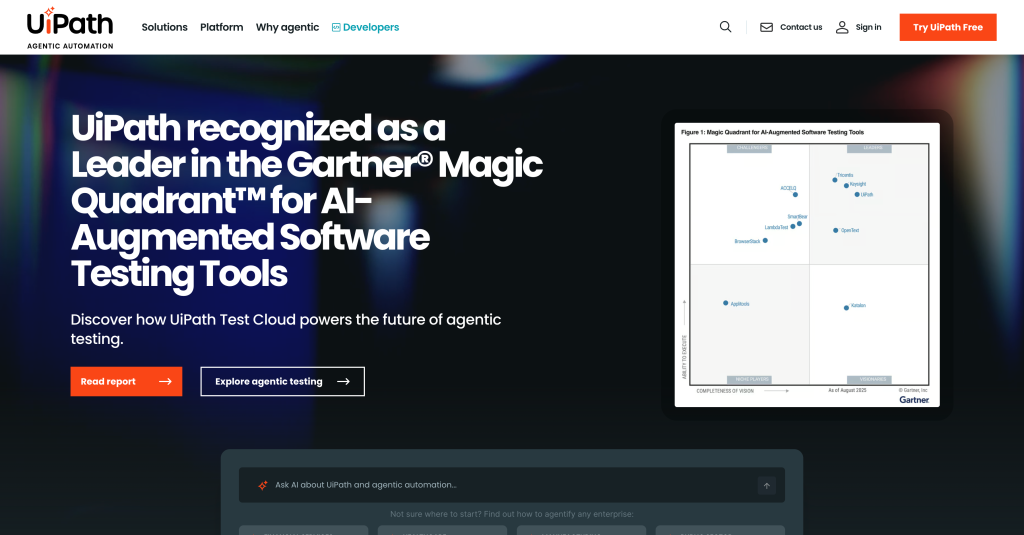
When discussing European AI success stories, UiPath deserves a spotlight – not least because its journey feels like a modern fairy tale for tech entrepreneurs. Founded in Bucharest, Romania (yes, not the typical London or Berlin startup scene), UiPath grew from a small apartment startup into a global leader in robotic process automation (RPA). In plain terms, RPA is about creating “software robots” that can handle all those repetitive, mind-numbing tasks on your computer: think of things like processing invoices, moving data between systems, or checking forms for errors. UiPath uses AI to make these bots smarter and more capable, enabling them to understand documents and even computer screens visually, just like a human would. The result? Companies can automate tons of routine digital work, freeing up employees for more complex, creative tasks.
What’s truly striking about UiPath is how rapidly it ascended. In just a few years, it went from a little-known Eastern European startup to a New York Stock Exchange-listed company with billions in valuation. In fact, it’s often cited as one of the biggest enterprise software companies ever to come out of Europe – and from a city (Bucharest) that wasn’t even on the tech map before. That’s a huge point of pride and proof of concept: if it can happen there, it can happen anywhere. The company’s CEO has famously said their dream is “a robot for every person,” meaning they envision AI helpers as common as email in the workplace. And they’re well on their way – UiPath’s tools are used by thousands of companies globally to speed up office processes.
From an AI perspective, UiPath combines classic automation with cutting-edge AI skills like computer vision and natural language processing. For example, their platform can read PDFs and emails (using NLP) or navigate a legacy software interface (using visual recognition) to do tasks, which earlier automation scripts couldn’t handle. It’s like having a tireless assistant who never gets bored doing the copy-paste work.
The impact on efficiency can be massive: businesses report saving countless man-hours and reducing errors by letting UiPath bots handle the grunt work. And it’s not just big corporations – even midsize firms and hospitals and governments in Europe are adopting these AI-driven bots to streamline operations. UiPath’s rise also energized the tech ecosystem in its home country; Romania now has a growing profile in AI and automation circles, partly thanks to UiPath’s influence.
7. Mistral AI (France) – The Newcomer with Big Ambitions
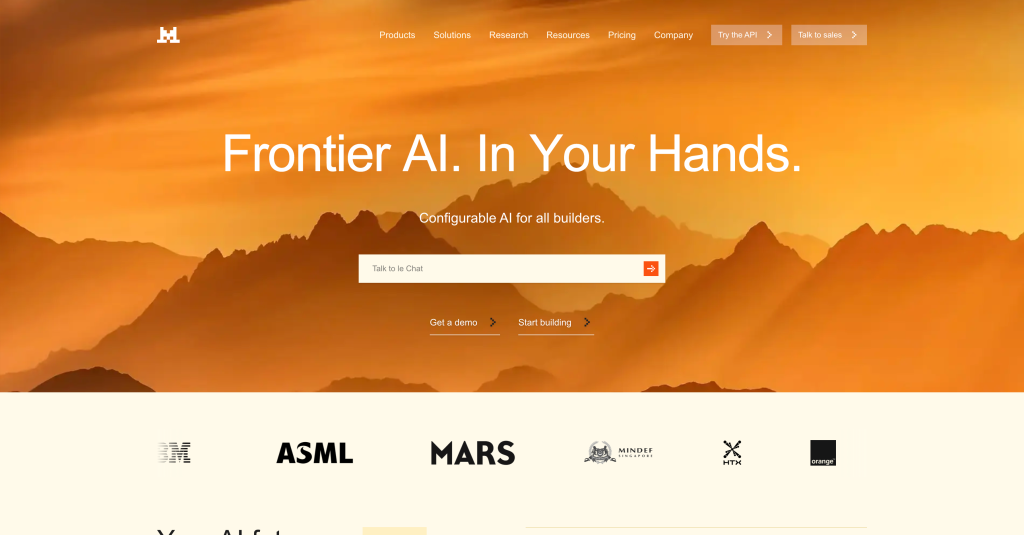
Next up is a company that didn’t even exist two years ago but is already making waves: Mistral AI from France. If Aleph Alpha is Germany’s shot at the AI crown, Mistral is France’s contender – and they came out swinging. Founded by a group of young AI researchers (some ex-Google, I believe), Mistral AI burst onto the scene with one of the largest seed funding rounds ever in Europe’s tech history. They secured a cool €105 million right off the bat in 2023, signaling tremendous investor confidence in Europe’s ability to produce cutting-edge AI models. What’s their goal? Mistral is laser-focused on generative AI, developing advanced large language models and other generative models that can potentially rival offerings from OpenAI or Anthropic. In other words, they want to build the brains behind AI chatbots, content generators, and all those model-based services – but do it with a European team, and presumably a European ethos.
One interesting aspect of Mistral AI is their commitment to an open approach. They have stated they plan to release open-source models under permissive licenses (Apache 2.0, for instance) for others to use and build upon. This is a bit of a contrast to some American AI labs that keep their best models proprietary. By open-sourcing, Mistral can foster a community of developers and researchers who iterate on their models, potentially accelerating innovation (and also making sure Europe has its own openly available AI foundation models).
At the same time, Mistral is offering a pay-as-you-go API for businesses who want easy access to their latest models without dealing with infrastructure. This dual strategy – open models plus a commercial API service – means they are trying to cater both to the community and to enterprise clients. It’s clever because it builds goodwill in the AI community (and perhaps gains wide adoption for their tech) while also aiming for a sustainable business model.
Mistral’s rapid rise reflects a broader trend: Europe is not content to be an observer in the AI revolution. The French government and European Union have been vocal about supporting “sovereign AI” capabilities, and Mistral’s hefty funding likely had some political tailwinds.
But at the end of the day, it will come down to results – can they build models as smart or useful as the ones from the US giants? We’ll find out soon enough. If passion and money count for anything, they’re in a good position. And symbolically, it’s great to see a fresh startup in Paris taking on a challenge this big.
8. Graphcore (United Kingdom) – The AI Chip Champion
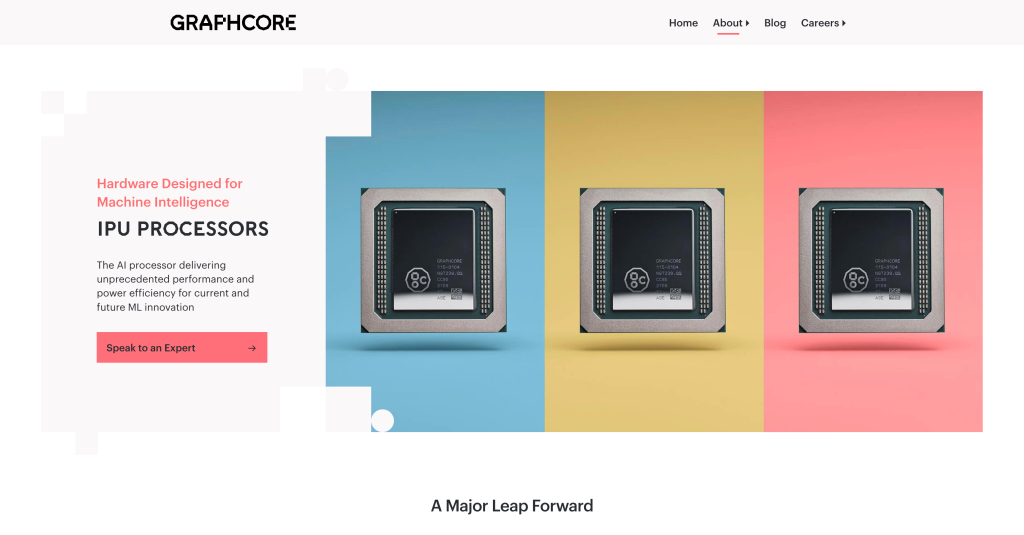
All this talk of software and algorithms – but what about the hardware that powers AI? Enter Graphcore, a UK-based company that’s all about building better chips for AI computing. If NVIDIA’s GPUs are the reigning champions of AI hardware, Graphcore is the ambitious challenger from across the pond. The company developed its own novel processor architecture called the IPU (Intelligence Processing Unit), designed specifically for the demands of AI workloads. Unlike general-purpose chips, Graphcore’s IPUs are massively parallel and optimized to handle the kind of matrix math and data flow that machine learning models need. In simpler terms, Graphcore built a custom engine just for AI brains, rather than repurposing gaming GPUs or standard CPUs. And it’s pretty darn impressive – their systems can train complex AI models at high speed, competing directly with NVIDIA’s latest and greatest in benchmarks.
Graphcore’s rise was a point of pride for the UK and Europe, which historically hadn’t produced a lot of leading semiconductor companies in recent decades. At one point, Graphcore was one of Europe’s most valuable AI startups, earning unicorn status thanks to large investments (including from venture arms of tech giants and even governments). Their hardware has been used in top research labs and data centers around Europe, often to test or run AI models that might otherwise require using cloud services from the US. For example, researchers in Oxford or Munich might use Graphcore IPU systems to experiment with new neural network architectures, enjoying some freedom from the NVIDIA/Google ecosystem. Graphcore even landed partnerships to offer their IPUs via cloud platforms, making them accessible to developers worldwide.
Of course, the chip game is tough – NVIDIA is a formidable opponent. There have been reports about challenges Graphcore faced (AI hardware is an expensive arms race, after all) But regardless of market share, Graphcore proved that Europe can innovate at the silicon level for AI, not just in algorithms. Every time you hear about diversification in AI hardware or the next-gen AI chip startups, Graphcore is inevitably in the conversation. They sparked a larger movement: now other European projects and startups are also exploring specialized AI hardware (there’s even talk of EU-funded chip initiatives, etc.).
In the grand narrative, Graphcore is like the scrappy upstart knight challenging the reigning king (Nvidia) – a classic David vs. Goliath, but in the realm of transistors and neural nets. And their story is still unfolding. If they succeed, it could mean a more robust, home-grown compute infrastructure for Europe’s AI future. And even if the fight is hard, they’ve already shown that the continent has the talent and vision to compete on silicon, not just in software.
9. Stability AI (United Kingdom) – Generative Art for Everyone
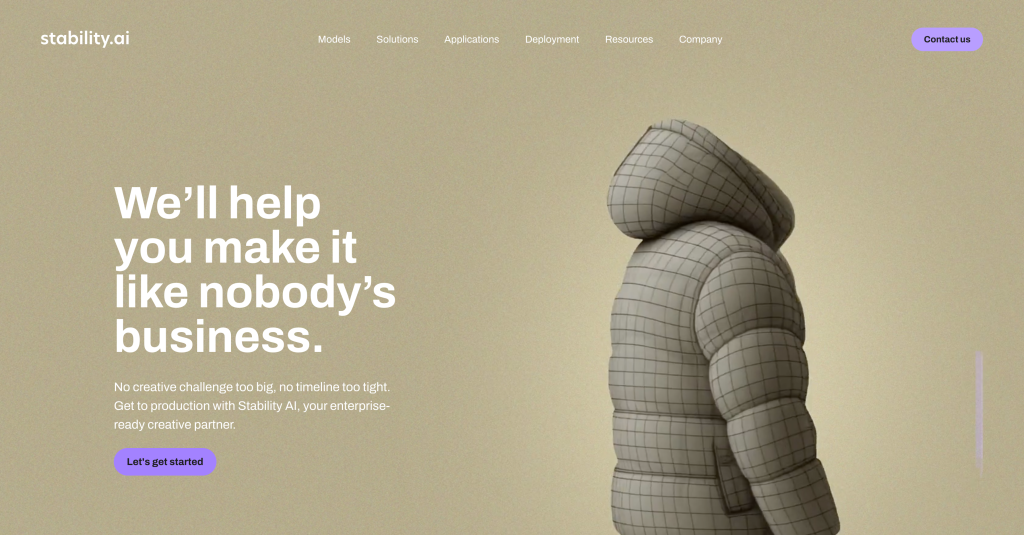
Now, let’s switch gears to the creative side of AI – an area where Stability AI has made a big splash. This London-based startup is best known as the company behind Stable Diffusion, the AI model that can generate amazing images from nothing more than a text description. Type in “a castle in the clouds in watercolor style,” and Stable Diffusion will paint it for you. The emergence of this tool in 2022 dramatically brought AI image generation to the masses – and unlike some other AI models, Stable Diffusion was released as open-source. That meant anyone could tinker with it, build apps on it, or use it to create art, without needing permission from a big tech company. Stability AI’s mission from the get-go has been to democratize AI, making advanced models accessible to everyone rather than kept behind closed doors. And they put their money (or rather, their code) where their mouth is.
Stability AI garnered significant attention (and venture capital) due to how quickly Stable Diffusion caught on. All of a sudden, artists, designers, and hobbyists worldwide had a powerful creative tool free of charge – and a vibrant community sprouted to share tips and showcase creations. By providing the model openly, Stability AI enabled a whole ecosystem: people fine-tuned the model on their own art styles, developers integrated it into design software and games, and yes, controversies were debated about ethical usage too. The company’s approach highlights a uniquely European mindset in AI innovation: prioritizing openness and community collaboration. They’ve also been involved in other generative AI projects (like text and audio models), often in collaboration with research institutions. But Stable Diffusion remains their crown jewel and a proof-of-concept that you don’t have to be a tech giant to create something hugely influential in AI. A small London startup did it.
From a technical standpoint, Stability AI’s work lowers the barrier to entry for AI creativity. You don’t need a supercomputer or a PhD to play with cutting-edge image generation – many people run Stable Diffusion on a decent PC or even rent a little cloud instance. This is a big deal. It’s fueling creativity in everything from graphic design and advertising to video game mods and experimental films. Of course, it also raised big questions (like how to handle copyright of generated images, or misuse of deepfakes), but Stability AI has been part of those conversations too, advocating for sensible guidelines. In the grand scheme, they’ve positioned Europe as a key player in the generative AI movement. And culturally, there’s something very European in giving a powerful art tool to the public – reminiscent of how the Renaissance spread knowledge, but in digital form. If you’ve seen a wild AI-generated artwork recently, chances are this little European upstart helped make it possible.
10. Synthesia (United Kingdom) – Lights, Camera, AI!

Rounding out our list is a company that’s redefining how videos are made. Synthesia, based in London, tackles a really cool intersection of AI and media: they use artificial intelligence to create synthetic videos where no physical camera or studio is required. Think of those AI avatars that can speak in any language, or a virtual news anchor reading a script that you type – that’s Synthesia’s realm. Using their platform, you can generate professional-looking videos just by providing text, choosing an avatar or character, and hitting go. The AI does the rest, producing a clip with a realistic person (or animated presenter) speaking your words. It’s like having a video production crew on demand, minus the cameras and lights. And this isn’t science fiction; it’s being used right now by companies for things like training videos, marketing content, and educational materials.
What sets Synthesia apart is the quality and ease of use of their AI video generation. A few years ago, AI-generated video looked clunky and robotic. But Synthesia’s avatars are remarkably lifelike – they blink, gesture, and have natural-sounding voices in dozens of languages. The company has carefully balanced realism with convenience. Users don’t need any prior video editing experience. If you can write an email, you can create a video in Synthesia. This lowers the barrier for content creation dramatically. For example, a HR manager in a company can whip up a training video for new hires by herself – no need to book a studio or pester Bob from video team. It saves time and cost. In fact, one of Synthesia’s selling points is that it can cut video production expenses by a huge margin and speed up turnaround, which businesses love.
On the tech side, Synthesia leverages advancements in deepfake and avatar technology, but applies them for productive, not nefarious, purposes. They received backing from big-name investors (including a venture arm of NVIDIA, interestingly) and have grown rapidly. If you visit their website, you’ll see a roster of avatar presenters – some based on real actors who licensed their likeness, others completely fictional. Type a script, choose one, and voilà: your AI spokesperson delivers the message, complete with appropriate facial expressions. Of course, Synthesia is mindful of misuse – they have safeguards and ethical guidelines, like not allowing public figures to be impersonated.
The existence of a company like Synthesia in Europe highlights how the AI revolution isn’t just about data centers and abstract models; it’s also about creative industries and everyday business communications. Europe has a strong media and advertising sector, and Synthesia sits right at that junction of creativity and technology. It brings a bit of wow factor to our list, doesn’t it? I mean, we started with AI beating humans at Go and diagnosing diseases, and we end with AI literally acting on camera. If that doesn’t show the breadth of what European AI companies are doing, I don’t know what does. From heavy industry to art and media – they’ve got it covered.
Summary
These companies are proof that Europe is very much in the AI game, each in its own distinct way. From DeepMind’s fundamental research to SAP and Siemens injecting AI into everyday business, from ambitious startups like Aleph Alpha and Mistral building the next-gen models to creative pioneers like Stability AI and Synthesia changing how we make art and content – the diversity is incredible. Europe’s AI ecosystem thrives on this mix of old and new, big and small. Sure, challenges remain (scaling up, competing globally, navigating regulations), and Europe historically was seen as lagging a bit in the tech startup arena. But as of 2025, the narrative has shifted: Europe is not just following AI trends – it’s helping set them. With strong support for research, a surge in investments, and a clear focus on ethical and human-centric AI, the region is carving out a role as a leader in trustworthy AI innovation.
And perhaps that’s Europe’s secret sauce – a balance of innovation with values. Many of the companies above echo themes like transparency, collaboration, and responsibility. In a world increasingly cautious about AI’s power, that approach might prove not only wise but also advantageous. So the next time someone says “all the big AI stuff happens in the US or China,” you can point them to this list and say, “Hold on, have a look at what Europe’s doing.” They might be surprised – and frankly, as someone observing this, I find it pretty exciting. Who knows, maybe the next household AI name will be something that sounds more like Müller or Giovanni than Smith or Jones. Europe’s certainly working on it, and we’ll all be watching (and maybe using their tools) as this story unfolds.









